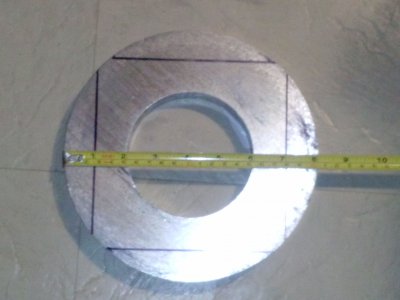- Joined
- Jul 4, 2014
- Messages
- 156
I want to mill a large size aluminum tube (8" OD, 4" ID and 1" long). My plan is to make a 6" square as you can see marked in the picture attached. I will have to mill the tube equally on 4 sides. I can start on one edge and once I have that side formed I can flip it around and mill the opposite edge. I should get both sides parallel.
I am not sure what I must do at this point to get the remaining two sides at 90 degree square. Please can you advice me?
Thank you and Happy New Year 2015 to all,
Prasad
Wynnewood PA

I am not sure what I must do at this point to get the remaining two sides at 90 degree square. Please can you advice me?
Thank you and Happy New Year 2015 to all,
Prasad
Wynnewood PA

